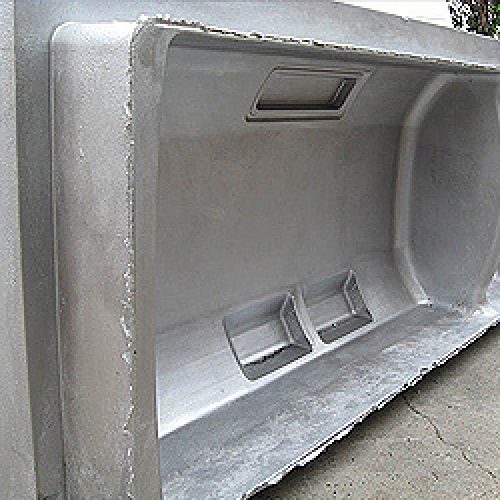Every stage of a non-ferrous casting process can be viewed as a worthy property manipulator. Time is a major contributor to final hardness values, with shoddy pour rate management causing undesirable material defects, including liquid turbulence and substandard fill. Now, while time effects the way the metal occupies its cavity, pour temperature is arguably a far more important casting parameter, as heat influences the microcrystalline structure of a metal. Let’s flesh out this observation with some important details.
Grain Size
A graphical view of a processed non-ferrous metal is easy to illustrate when temperature is the causal factor. The linear graph begins at room temperature and elevates quickly to melting point. Aluminium, for instance, liquefies at 660°C, at which point thermal energy is still applied. The goal is to achieve pour temperature, a superheated realm that lays above the physically established melt site. It’s by varying this value that we can alter important mechanical characteristics. In effect, due to excess thermal energy, the alloy will take longer to cool and the microstructure, the grain of the metal, will change size.
Superheated Quality
In manipulating grain size and other microcrystalline parameters through thermal variance, we gain control of mechanical strength and hardness, meaning there are other ways, non-chemical routes, in engineering science that can be applied when we wish to alter the properties of non-ferrous metals. The coarse or fine-grained materials also form as precipitates that resist creep, deliver improved fatigue resistance, and enable superior attributes to be injected into a number of iron-free alloys.
Refined Grains
The fine grain of a cooling non-ferrous alloy favours certain workability practices, including that of a complex extrusion process. A coarser grain would be harder but susceptible to cracking, which is the kind of behavior non-ferrous metals must avoid in the workshop. Finally, remember that these metals all have different melting points and that this factor must be added to processing parameters before superheat is properly addressed. Tin and aluminium both exhibit low melt points. Copper and mangenese come next at the middle of this scale. And chromium sits at the top alongside tungsten and molybdenum. Again, the precipitation of tightly grained variants of each metal and each of their varied forms will depend on different superheat nodes.
The avoidance of complex metallurgical oversight is achieved by this thermal processing stage, the ability to refine the grain through the pouring of non-ferrous metals at different temperatures.


